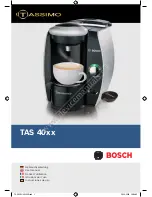
Installation
Water
The water supply for this ice machine has been in
contact with many materials since it fell from the
sky as rain. All rain is slightly acidic, and tends to
dissolve the materials it comes in contact with.
During water’s journey to the ice machine, it has
flowed over and through the ground, been picked
up by a municipal or private pump, forced through
a series of pipes of differing construction and may
have been treated by the municipality providing
the water.
The water supplied to this ice machine will then
contain a variety of substances that will likely show
up as solids during the ice making process. These
solids are similar to those found when water is
boiled out of a saucepan. Only the water boils
away, and the minerals that were in the water
solidify in the pan. During ice making only the
water is frozen into ice, the minerals stay behind in
the reservoir. This machine drains out some of the
the water in the reservoir every cycle to minimize
the amount of minerals in the water system, but
after time the minerals will appear and have to be
dissolved by ice machine cleaner, then flushed
away during the cleaning process.
An ice machine is a food manufacturing plant; it
takes a raw material, in this case water, and
transforms it into a food product, ice. The purity of
the water is very important in obtaining pure ice
and in maximizing product life.
The water to the ice machine should be filtered.
Water filters vary greatly in ability and function.
Install one that filters out suspended solids to a
dimension of 5 microns or less. The finer the filter
the better, but finer filters may plug-up sooner than
course ones. It may be necessary to add a course
filter ahead of the fine filter to prolong filter life.
Polyphosphate feeders are usually effective in
many water conditions.
Have the water tested. Acidic water or alkaline
water will both cause corrosion. Dissolved solids
cannot be filtered out. Softened water is not
recommended. Never use de-ionized water.
Reverse-osmosis water must be treated with
buffering agents before use in the ice machine.
Check with a water treatment specialist regarding
testing, treatment and filters.
Location
This ice machine may be installed in the open or
under a counter. Clearance may be required at the
sides or top beyond what’s needed to place the
cabinet into position. Air cooled models take air in
the right side and exhaust out the back. Space is
required for utility connections at the back.
The ice machine is NOT designed for outdoor
use. It must be installed indoors, in a
controlled environment. The air and water
temperatures must not exceed rated limits.
Pre-installation:
1. Inspect the place where the ice machine is to be
installed. Check for:
••
space for the cabinet,
••
water supply,
••
drain availability
••
and electrical power supply.
No extension cords are allowed. The building drain
inlet must be lower than the drain outlet of the ice
bin. The water supply must have a hand shut off
valve accessible when the unit is installed.
SLE300
January 1995
Page 4





































